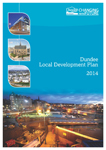Web Feature Service
Type of resources
Available actions
Topics
INSPIRE themes
Keywords
Contact for the resource
Provided by
Years
Formats
Representation types
Update frequencies
Service types
Scale
Resolution
-
Community Council boundaries as established by Dundee City Council under the Local Government (Scotland) Act 1973. This dataset includes all wards in the City, whether an active Community Council has been formed or not.
-

Tree Preservation Orders are made by a Planning Authority under Section 160 of the Town and Country Planning (Scotland) Act 1997 as amended by the Planning etc (Scotland) Act 2006 and within the procedures set out in the Town and Country Planning (Tree Preservation Order and Trees in Conservation Areas) (Scotland) Regulations 2011. They are an effective means of protecting individual trees, groups of trees or woodlands whose removal would have significant impact on the public amenity of an area. Where protection is given by a TPO, prior consent in writing is required from the Council to carry out any work on the trees. It is an offence to cut down, lop, top, uproot or wilfully damage or destroy a protected tree without the Council¿s permission. An owner wishing to carry out work on a tree must apply online at the Scottish Government¿s e-planning system at https://eplanning.scotland.gov.uk/WAM/.
-
The Scottish Vacant and Derelict Land Survey (SVDLS) is a survey undertaken to establish the extent and state of vacant and derelict land in Scotland. The survey has been operating since 1988 and is managed by the Scottish Government Communities Analytical Services. Most Councils submit data annually with the Survey base date of 31st March. The data collected provides an invaluable source of information relating to vacant and derelict sites and assists in reinforcing and justifying national policy established to bring about the re-use and regeneration of these land resources. Dundee City Council conduct an annual survey where potential sites, identified in the preceding 6 months by Dundee City Council, are assessed for possible inclusion on the Scottish Vacant & Derelict Land register for that year. During the survey any site that has been redeveloped or regenerated are removed from the register and reported to Scottish Government. Scottish Government also provide Vacant & Derelict Land Funding (VDLF) to qualifying local authorities to facilitate the regeneration of land.
-
Catchment areas of all mainstream schools within the Dundee City Council administrative boundary. Catchments are available for Primary and Secondary, Denominational and Nondenominational schools. Catchment areas are used to help place children resident in that area into their catchment school. Children are allocated Priority 1 status for their catchment school. Other children not resident in that catchment area are required to make a placing request for entry into that school. Catchments updated to reflect changes outlined in Education Committee reports 175-2015, 177-2015 and 176-2015 which come into effect in 2016.
-
The consumption of alcohol is prohibited in public places within the area identified, as detailed in the "Dundee City Council Prohibition of Consumption of Alcohol in Designated Public Places Byelaws 1999". The bye laws do not apply on 31st December from 6pm until the end of the day, and on 1st January until 6am.
-

Buildings are listed by Historic Scotland for their special architectural or historic interest on behalf of the Scottish Government. The aim of listing such buildings is to protect or enhance their special character by affording them statutory protection. The principles for listing buildings are fairly complex and there is no right of appeal against the Scottish Governments decision to list a property. Listed buildings are listed in 3 categories - A, B and C. Category A listed buildings are of national or international importance. Category B listed buildings are of regional importance. Category C buildings are of local importance. A building¿s listing covers its interior, exterior and ¿any object or structure fixed to a building¿ or which falls within the curtilage of such a building, forming part of the land since before 1 July 1948.
-

The Local Development Plan for Dundee contains the spatial strategy that will guide future development up to 2024 and shows which land is being allocated to meet the City's development needs and where new development should and should not happen. The Plan contains policies and proposals covering the principal land use issues in the City and will provide the context in which decisions on planning applications will be made. The Local Development Plan will be reviewed at five yearly intervals to ensure that an up to date plan is in pl ace at all times to guide future development in the City.
-
Dundee is covered by a network of 21 Smoke Control Areas, established under Section 18 of the Clean Air Act 1993. Under the Clean Air Act 1993, it is an offence to emit smoke from a chimney of any building in a smoke control area. It is also an offence to burn solid fuel in a home or other premises unless the fuel is: * an 'authorised smokeless fuel' (standard house coal and wood are not authorised fuels); or * burnt in an 'exempt appliance'.
-
Neighbourhood Representative Structures are supported and recognised by Dundee City Council in a similar way to Community Councils, and both have a right to consultation on matters relating to their neighbourhood. This dataset shows the active neighbourhood representation that the Council consults with across the City.
-
Serviço de Descarregamento (WFS) de temas harmonizados no âmbito da Diretiva INSPIRE, presentes na Infraestrutura SIG Municípal do Concelho de Nordeste, nomeadamente: Endereços; Edifícios; Toponímia; Revisão do PDM e PP Salga; Edificios de Utilidade Pública e Sistemas de Abastecimento de Água e Saneamento de Águas Residuais e Pluviais.
 Metadata catalogue
Metadata catalogue